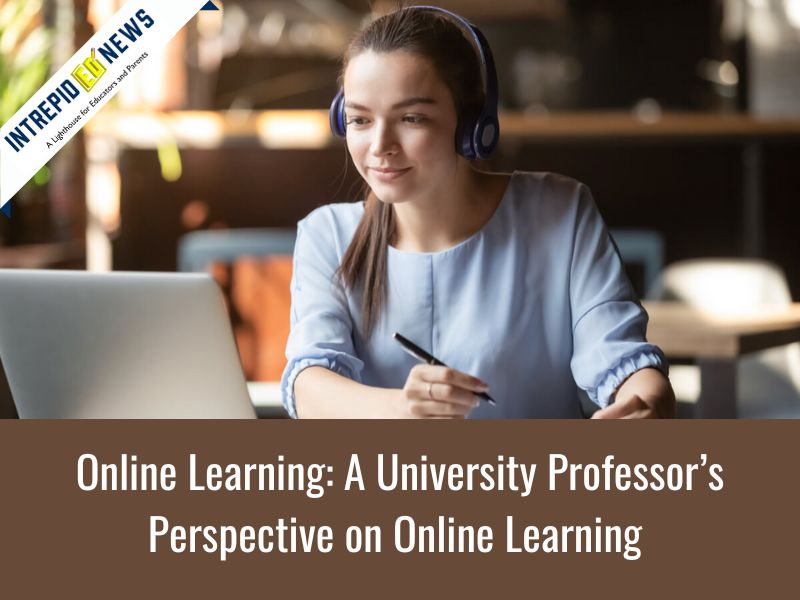This article is republished with permission from IntrepidEd News
John Watson
We sometimes look to post-secondary education to inform our perspectives on digital learning in the K-12 landscape. A recent article in The Chronicle of Higher Education reminds us why this approach can be so valuable and should be required reading for policymakers requiring that all students must be back to f2f learning in the fall. Although this article describes a Harvard professor’s experience with remote learning, much of it applies to K-12 teaching and learning as well. It also demonstrates why the shift to good online teaching and learning is often so hard for experienced teachers and professors.
Why an Active-Learning Evangelist Is Sold on Online Teaching describes Professor Eric Mazur, a “seasoned expert on effective teaching strategies” whose class “is built around project-based learning, group work, and peer-to-peer instruction.”
Let’s begin with the startling conclusion: after shifting his course to be online, he says:
the results are in and he’s convinced: online teaching is better. Not in all circumstances, to be sure. But in his applied-physics courses, students showed larger learning gains and felt more supported than students had in in-person classes. In fact, they appear to have learned so much more effectively in this new format that he wonders if it’s ‘almost unethical’ to return to the classroom this fall… ‘I have never been able to offer a course of the quality that I’m offering now,’ he says. ‘I am convinced that there is no way I could do anything close to what I’m doing in person. Online teaching is better than in-person.’
Did Mazur just shift all his classes to real-time videos? Of course not.
The class met twice a week, virtually, on Tuesdays and Thursdays, with the option of attending a morning or afternoon session. In between, his 80 students worked on problem sets and read the online textbook…[using] an interactive program that allows students to pose questions in the text as they read each chapter, then respond to others… All of this meant that by the time they got to class, students had been marinating in their work for several days, both alone and together.
Mazur also discovered what experienced online teachers already know:
One benefit of this setup, says Mazur, is that students go at their own pace. He has thought a lot about how classroom-based work, even when it is student-led, is hostage to the clock and the instructor. Not every group works at the same pace, yet everyone has to wait until others are ready, or rush ahead when they fall behind. When groups set their own pace, it gives them the space to work through problems or get help as needed. The value of self-paced learning is also evident outside of class, says Mazur, who built more asynchronous work into his online course.
The whole article is well worth reading and doesn’t take long.
Why is this information so valuable for K-12 education given that it describes a university professor’s experience? I believe there are three main reasons:
First, there are clear battles going on between those advocating for continued online learning options for students, and those who would eliminate those options. Most advocates for online learning options start from the accurate admission that online learning is not for all students. A strong statement from a professor at a leading university saying that in this course, the online version is better, lays a stronger claim for wider access to online learning. Online courses can be better for many students — not just those who are outliers. That’s not to say it should ever be the only option, but it should be an option.
Second, the article describes a professor who was taking teaching very seriously and applied that same thoughtfulness and effort to his online class. He re-thought his course from the ground up for the online environment. That is what good online teaching requires.
Third and perhaps most important, the article explores just how difficult this was.
None of this has been easy, of course. As Mazur put it, he spent a “monstrous amount of time” putting the course together this year. But he’s so convinced of how valuable this model is that he asked Harvard to allow him to keep teaching online this fall. And he recently posted a video — titled “Remote Teaching Was a Disaster. Was It?” — reflecting on the past year and going into more depth on how he structured his course.
When K-12 schools shifted to remote learning, very few if any teachers had the opportunity to put in as much time as Mazur did to make the change. Most schools shifted from f2f to remote learning in a week or less. In addition, K-12 teachers simply don’t have the time that professors have to revamp their courses.
But educators have the opportunity right now, in summer 2021, as they plan for online options in the fall. Courses can be re-imagined. Professional learning and support can be provided to teachers. District leaders can determine the best combination of building or buying content, the ideal technology platforms, and all the other elements that make an online school or course successful.
It’s not easy. But it can be done — as evidenced by plenty of post-secondary institutions, and many K-12 schools and course providers.
